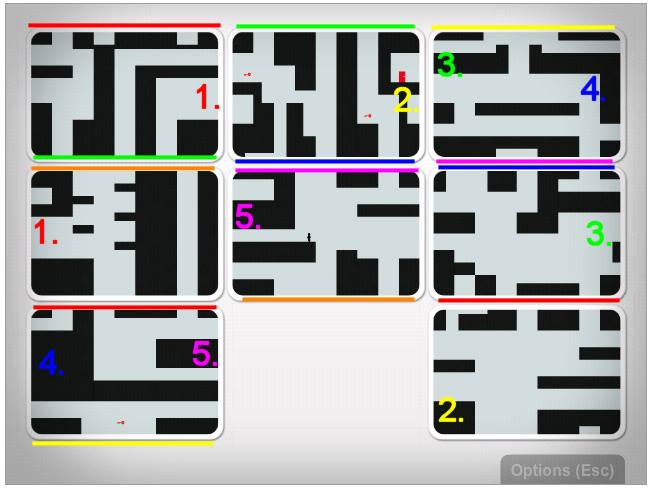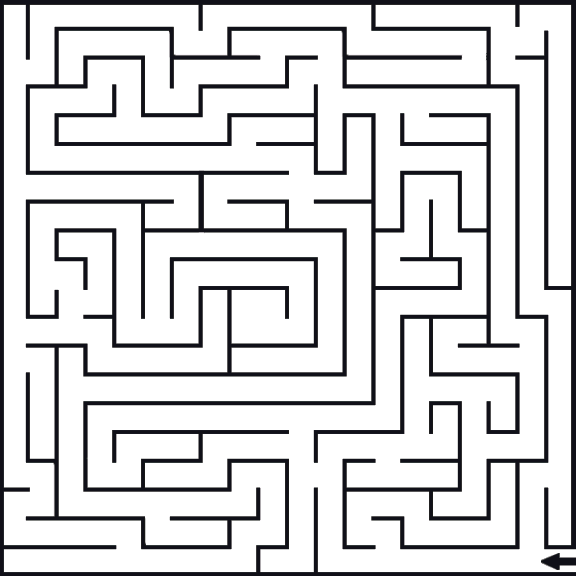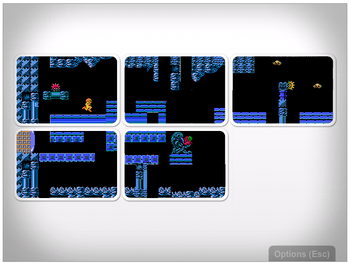Continuity: 1 of 101
 Friday, February 12, 2010 at 12:17AM
Friday, February 12, 2010 at 12:17AM 1up.com has a feature of the year's best 101 free games. Perhaps I'll write something on every game. Something light on words yet hard hitting critique wise. Sound ambitious? Sure. But I'm not worried about making it to the end. The journey will certainly be worth it. Starting with the puzzle category, here's Continuity.
The presentation is extremely clean. The music fitting. The controls simple and individual. The JUMP mechanic a bit wily but still very usable. Ending each level could be a bit more substantial (like having an animation of the character walking through the door), and the game might be better with only about 20 levels instead of 32 (many of the levels were very similar to each other). I'm being a bit picky with the last two comments. Despite controlling an avatar and jumping around, Continuity is a puzzle game. And being a puzzle game, what stands out about Continuity is its unique puzzle engine and how the game can be read. For more on what I mean by "reading" see here.
Reading Continuity on the most basic level involves looking at the solid formations within a single cell and determining how you can move through the cell. Sometimes you just walk around. Other times you jump. As I've said before, figuring out how to platform through an environment is more like looking than reading. It gets much more complex from here.

The bars indicate matching tops and the numbers matching sides.
Shifting the cells around is what complicates the platforming progression in Continuity. With such a design, getting from A to B isn't a stable path through the level. It's much more fluid and relative. As long as you find a way to get to the next key or the door, all the cells can be shuffled around in the process. This design therefore mixes up the progression/path possibilities enough so that players have to read the details carefully. To put it succinctly, players can only travel between adjacent cells when the sides line up perfectly. So players have to carefully read the exact arrangement of the sides of every cell. The more cells, the more complexities players have to consider.
In the image above there are 8 cells. This means there are 16 sides and 16 tops. For each side, one must consider if it lines up with 7 other sides. It's the same for the tops. That's over 100 possible matches you have to read your way through. In the end, there are only 7 matching tops and 5 matching sides. That's only 12/100+!
 Expand the number of cells, and you increase the number of sides to read by a factor of 4 per cell. Levels can be made up of 1 to 15 cells.
Expand the number of cells, and you increase the number of sides to read by a factor of 4 per cell. Levels can be made up of 1 to 15 cells.
Also, cells with smaller shapes and arrangements that look like they match up almost create look-alike mixups. The finer the detail, the more complex and engaging the reading becomes.
Consider how space works in Continuity. Because you can move cells around you can potentially loop between two cells vertically or horizontally. Unlike other platforming games that loop the sides of the stage (SMB3, Kid Icarus, NSMB), a level in Continuity can have multiple created loops; like a sea of whirlpools. The more cells there are in a level the more combinations of loops you can create. Furthermore, because gravity always pulls down the limitations of verticality are evident. Combine this dynamic with the ability to arrange cells to access other cells and reach higher places and the reading in Continuity achieves a competent level of depth and elegance.
The result is a game that plays like Portal and Mighty Flip Champs! Maneuvering through complex spaces created out of simple 2D spaces is like flipping pages in Mighty Flip Champs! And rearranging cells to teleport through space (in a relative sense) gives Continuity a Portal like feel. Still, Continuity doesn't compress and connect 3D space like Portal neither does it engage the player's mental capacity to piece together a 3D obstacle course like in Mighty Flip Champs! In these ways the reading in Continuity falls short. Fortunately, Continuity has one more way it complicates the reading process.

Figuring out a path through a level in Continuity and lining up the cells to make it possible is an exercise that's very similar to navigating a maze like the image above. In this way, it's common for players to pick a target destination (a key or a door most likely) and chart a path to that target by reading the sides and spaces of the cells. Once you get a read on the path to take, you'll most likely have to move cells around. The more cells you move, the more you corrupt the relative reads you have on the cells. In other words, if you remember that the cell in the bottom left corner matches the cell at the top right, when you look for these cells they may be repositioned into new spots. The more complex the cells and the more cells there are, the easier it is to seriously disorient yourself. The more disoriented you are, the more you have to re-read the playing field. I remember feeling lost while working through some of the hardest levels in the game.
You may have noticed that I have repeatedly described reading Continuity as sorting through a lot of complexities. Reading Continuity isn't a very deep process as far as puzzle games go. I use the words "complexity" and "deep" very selectively (read more about depth vs complexity here). To explain, remember the 12/100+ figure from above? Reading or sorting through all the match up combinations in a level is a simple yet possibly laborious process. The more cells in a level, the more you have to work through. What makes this so complex is that there's no way to reduce this work load. Though it's true that every puzzle doesn't use every cell available, for the most part you have to consider all the possible cell combinations. This creates a very different puzzle experience compared to deep puzzle games like Planet Puzzle League or Base10. In these games you can use the dynamics of the game systems to develop reading strategies that greatly reduce the amount of information you have to process before being able to come up with a solution.
Not all puzzle games have to support deep reading. Continuity is one of the best complex reading puzzle games I've ever played. After fighting through all 32 levels, I came out of the experience inspired. The mechanic of shifting cells is too ingenious for just one game. Can you imagine what it would be like to play a 4 player action game like NSMBWii with cell shifting? Or better yet, what about a Metroid style game with cell shifting? Instead of being restricted with keys, the game could use powerup keys!

OMG


Reader Comments